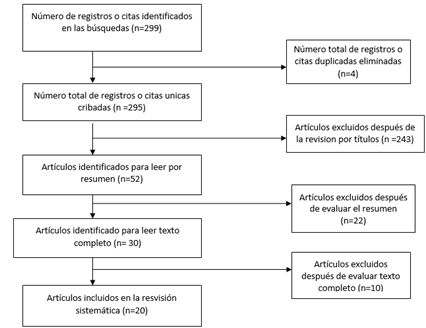Abstract
Introduction: In response to dentin sensitivity, multiple products have been developed, including Clinpro XT, a lightcuring resin-modified ionomer glass varnish with fluoride, calcium andphosphate.
Methodology: A systematic review of the literature was carried out. The selection was based on title, abstract and full text according to the inclusion and exclusion
criteria.
Results: Of 299 articles, systematic reviews, meta-analysis, in vivo and in vitro studies and 2 surveys were selected.
Discussion: Clinpro XT reduces dentin permeability, occludes dentin tubules and
inhibits their reopening, increases the bioavailability of minerals in saliva and
promotes enamel remineralization.
Meaning greater protection of enamel and dentin immediately and in the long term.
Conclusions: Clinpro XT was shown todecrease dentin hypersensitivity even 6 months after application.
References
2. Moraschini V, da Costa LS, dos Santos GO. Effectiveness for dentin hypersensitivity treatment of non-carious cervical lesions: a meta-analysis. Clin Oral Investig. 2018;22(2):617-31.
3. Sharma H, Gupta C, Thakur S, Srivastava S. Comparative evaluation of calcium phosphate-based varnish and resin-modified glass ionomer-based varnish in reducing dentinal hypersensitivity: A randomized controlled clinical trial. Eur J Dent. 2017;11(4):491-5.
4. Terenzi M, Botan TG, Lopes de Oliveira GJP, Zandim-Barcelos DL, Sampaio JEC. Effectiveness of Clinpro XT in reducing dentin permeability and its resistance to acid challenges. Oral Health Prev Dent. 2018;16(4):339-44.
5. Machado AC, Rabelo FEM, Maximiano V, Lopes RM, Aranha ACC, Scaramucci T. Effect of in-office desensitizers containing calcium and phosphate on dentin permeability and tubule occlusion. J Dent. 2019;86:53-9.
6. Zeola LF, Teixeira DNR, Galvão A da M, Souza PG, Soares PV. Brazilian dentists’ perception of dentin hypersensitivity management. Braz Oral Res. 2020;33:e115.
7. Clark D, Levin L. Non-surgical management of tooth hypersensitivity. Int Dent J. 2016;66(5):249-56.
8. Moura GF, Zeola LF, Silva MB, Sousa SC, Guedes FR, Soares PV. Four-session protocol effectiveness in reducing cervical dentin hypersensitivity: A 24-week randomized clinical trial. Photobiomodul Photomed Laser Surg. 2019;37(2):117-23.
9. AlKahtani R. Dentin desensitizing agents: too many options. Gen Dent. 2017;65(5):17-20.
10. Douglas-de-Oliveira DW, Vitor GP, Silveira JO, Martins CC, Costa FO, Cota LOM. Effect of dentin hypersensitivity treatment on oral health related quality of life — A systematic review and meta-analysis. J Dent. 2018;71:1-8.
11. Matranga D, Matera F, Pizzo G. Evaluating the statistical methodology of randomized trials on dentin hypersensitivity management. J Oral Sci. 2017;59(4):461-8.
12. Clark D, Levin L. Tooth hypersensitivity treatment trends among dental professionals. Quintessence Int. 2018;49(2):147-51.
13. Brannstrom M. The hydrodynamic theory of dentinal pain: sensation in preparations, caries, and the dentinal crack syndrome. J Endod. 1986;12(10):453-7.
14. Garofalo SA, Sakae LO, Machado AC, Cunha SR, Zezell DM, Scaramucci T, et al. In vitro effect of innovative desensitizing agents on dentin tubule occlusion and erosive wear. Oper Dent. 2019;44(2):168-77.
15. Canali GD, Rached RN, Mazur RF, Souza EM. Effect of erosion/abrasion challenge on the dentin tubule occlusion using different desensitizing agents. Braz Dent J. 2017;28(2):216-24.
16. Liu X-X, Tenenbaum HC, Wilder RS, Quock R, Hewlett ER, Ren Y-F. Pathogenesis, diagnosis and management of dentin hypersensitivity: an evidence-based overview for dental practitioners. BMC Oral Health. 2020;20(1):220.
17. Madruga M de M, da Silva AF, da Rosa WL de O, Piva E, Lund RG. Evaluation of dentin hypersensitivity treatment with glass ionomer cements: A randomized clinical trial. Braz Oral Res. 2017;31(0):e3.
18. Alsayed EZ, Hariri I, Nakashima S, Shimada Y, Bakhsh TA, Tagami J, et al. Effects of coating materials on nanoindentation hardness of enamel and adjacent areas. Dent Mater. 2016;32(6):807-16.
19. Scotti CK, Velo MM de AC, Brondino NCM, Guimarães BM, Furuse AY, Mondelli RFL, et al. Effect of a resin-modified glass-ionomer with calcium on enamel demineralization inhibition: an in vitro study. Braz Oral Res. 2019;33(0):e015.
20. Kannan A, Padmanabhan S. Comparative evaluation of Icon® resin infiltration and ClinproTM XT varnish on colour and fluorescence changes of white spot lesions: a randomized controlled trial. Prog Orthod. 2019;20(1):23.
21. van der Weijden FN, van Loveren C, Slot DE, van der Weijden GA. Preventive dentistry 4. Prevention and treatment of dentine hypersensitivity. Ned Tijdschr Tandheelkd. 2017;124(3):133-9.


